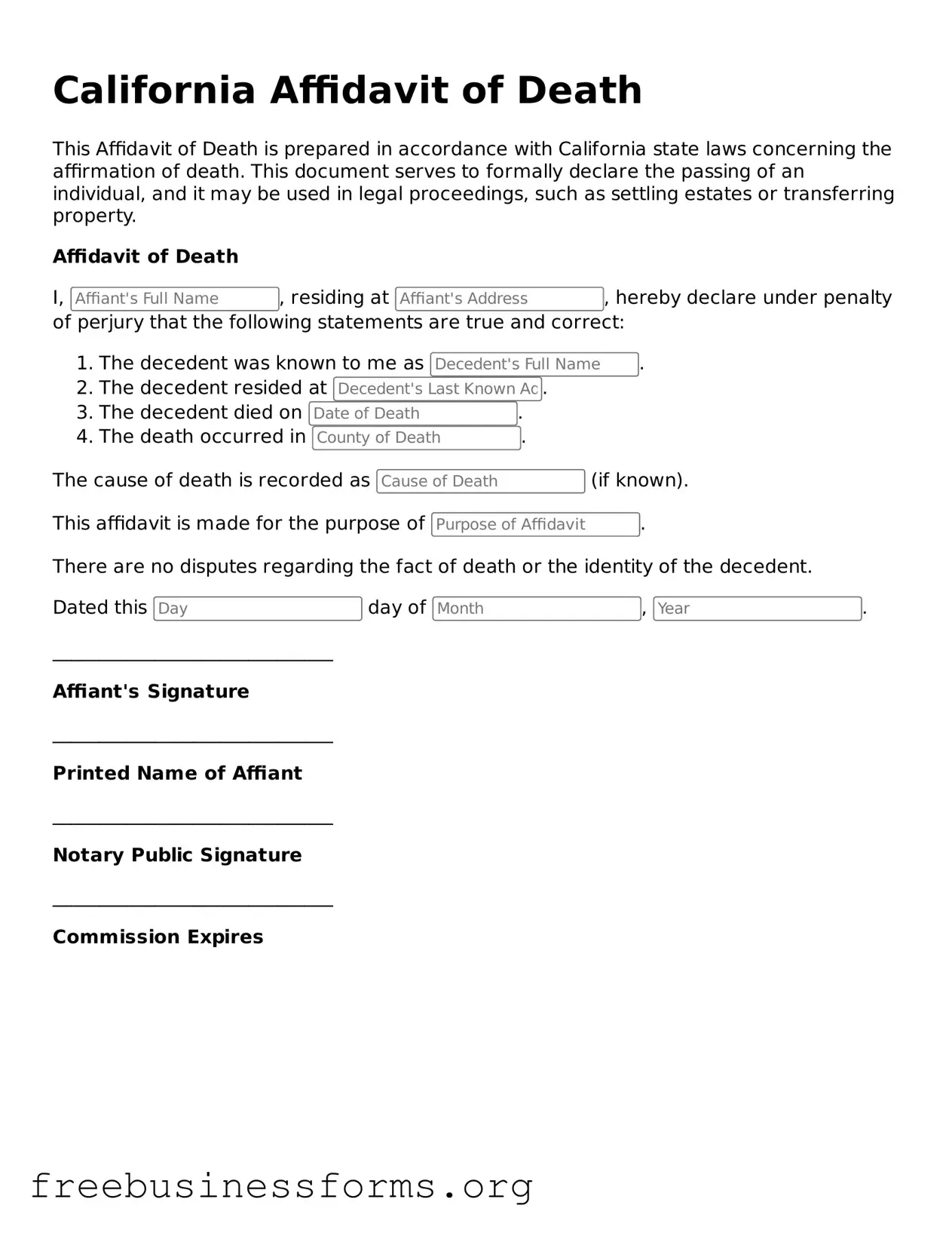Blank Affidavit of Death Template for California
The California Affidavit of Death form is a legal document used to officially declare the death of an individual. This form is often required to transfer property or settle the deceased's estate. Completing the affidavit ensures that the death is recognized by relevant authorities and facilitates the necessary legal processes.
Open Form Here
